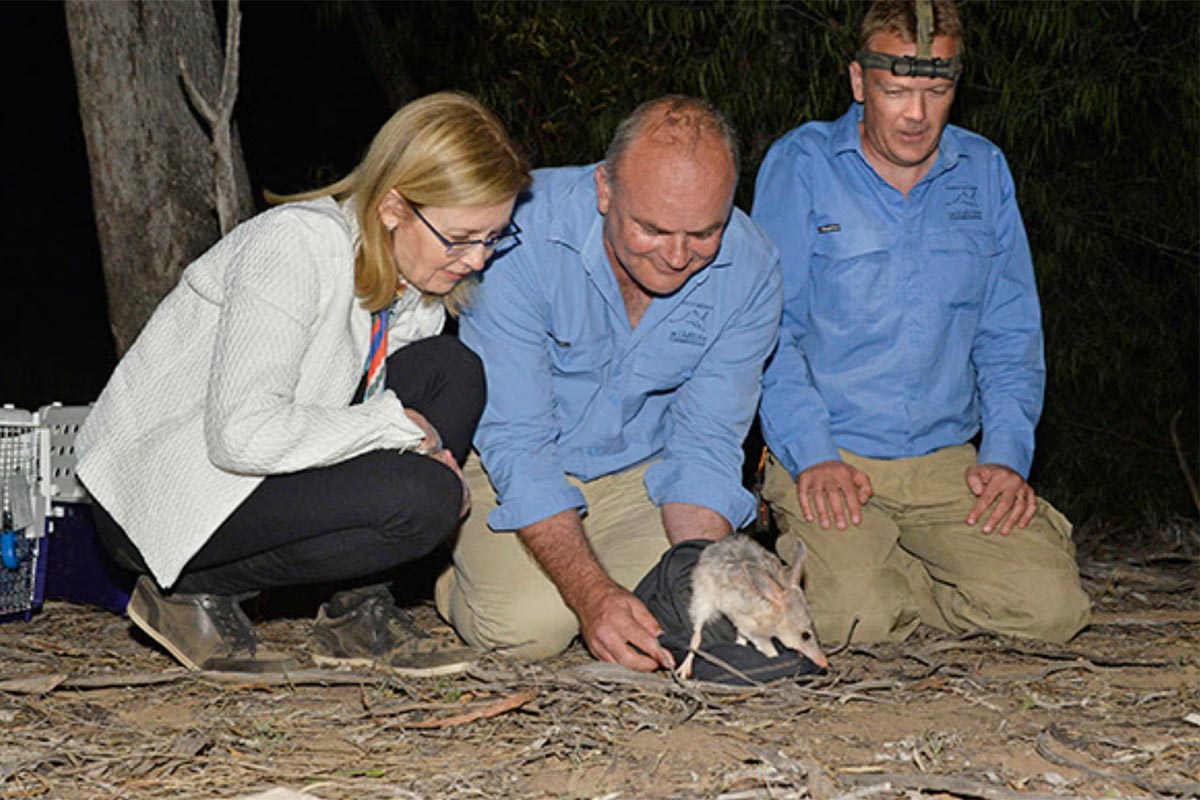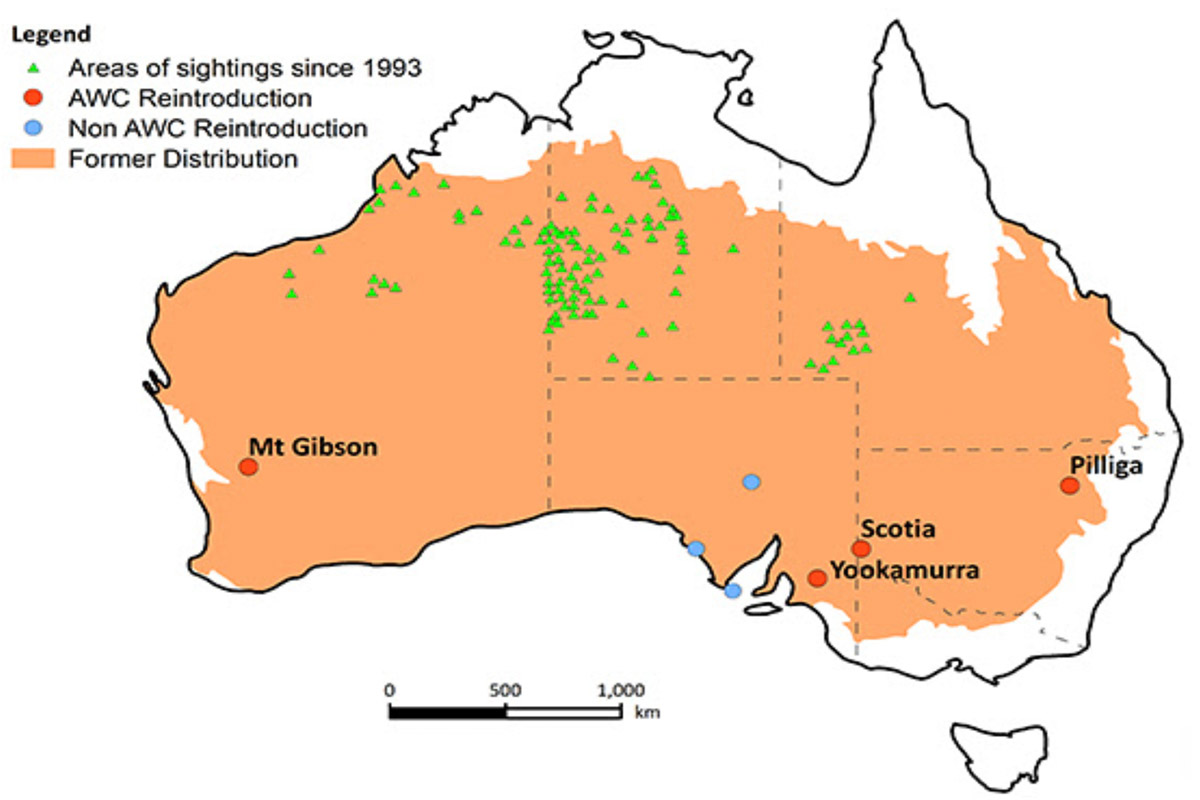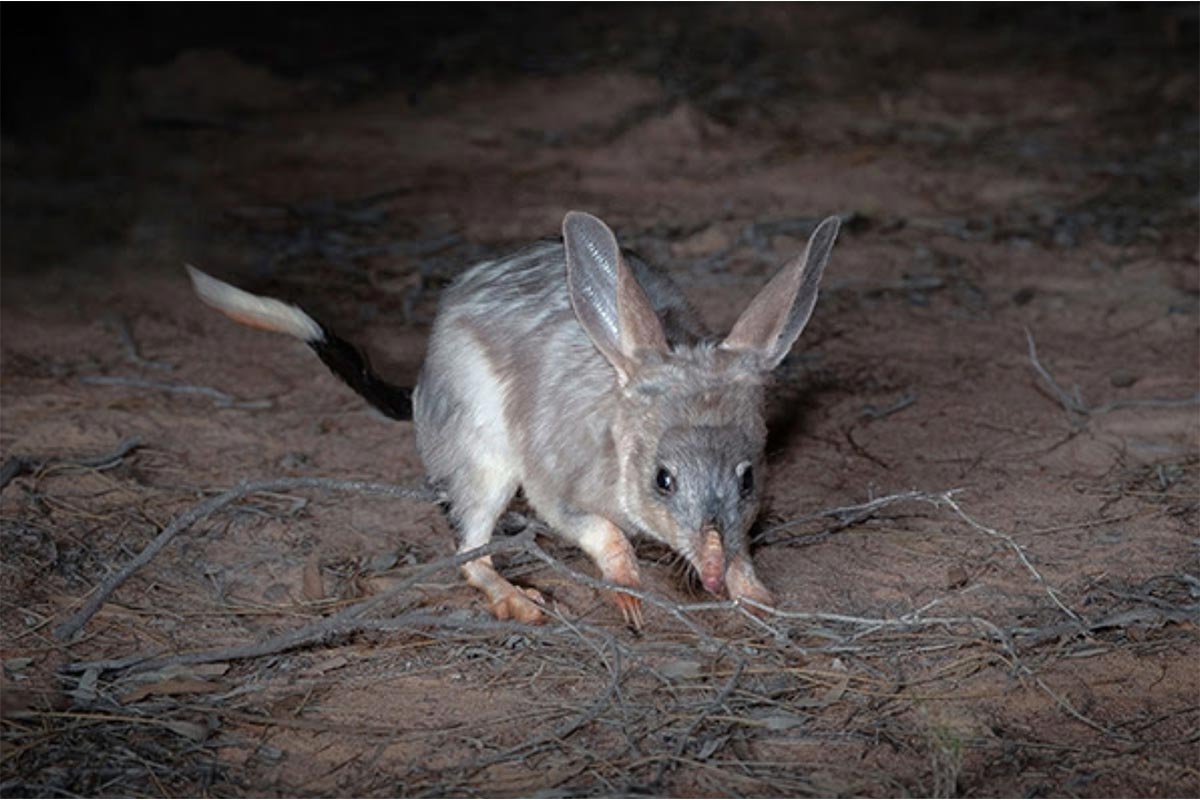AWC, through its dedicated sanctuaries, protects some of the most endangered native flora and fauna in Australia. That includes over 70% of all native terrestrial mammals, and over 50% of reptiles.
Their conservation programs are overseen by qualified biologists and ecologists, and have resulted in some amazing wins for conservation in the land down under.

One of the first Bilbies to go back to a NSW national park after more than 100 years is released by NSW Environment Minister Gabrielle Upton, AWC CEO Tim Allard and AWC Wildlife Ecologist Greg Holland. Photo courtesy of Wayne Lawler/AWC
The exciting news about the Bilby reintroduction is worth revisiting, albeit a few weeks on.
A message straight from AWC
At the end of last year, AWC sent members an inspiring tale of reintroducing the Bilby back into the wild, in parts of Australia that it sadly disappeared from long ago. Here’s what they had to say:
AWC reached a historic milestone last night with the release of the first Bilbies into the Pilliga, as part of our groundbreaking partnership with the New South Wales Government.
Environment Minister Gabrielle Upton, who attended the release, said it was the first step towards restoring locally extinct mammals to the state.

Bilbies were once found throughout most of Australia. Illustration courtesy of AWC.
“The Bilbies are the first of 13 regionally extinct mammals that will be returned to the wild in the 10-year NSW Government Saving our Species project,” Ms Upton said.
“The return of the Bilby is internationally significant; this is a major victory in the campaign to save our species from extinction,” she said.
The last record of a Bilby in NSW was near Wagga Wagga in 1912. Since then, AWC has re-established a wild population of Bilbies within an 8,000 hectare, feral predator-free area at Scotia Wildlife Sanctuary in far western New South Wales. Due to predation by cats and foxes, conservation fences are currently the only effective strategy for protecting Bilbies and other small to medium-sized native mammals from extinction.
A 5,800-hectare feral predator-free fenced area, constructed over four months in early 2018, is a landmark feature of AWC’s partnership with NSW National Parks in the Pilliga. The establishment of the fenced area will enable six locally extinct mammals to be reintroduced to the Pilliga: Bilby, Western Quoll, Western Barred Bandicoot, Brush-tailed Bettong, Bridled Nailtail Wallaby and Plains Mouse.

The 32.1 kilometre fence, built in just four months, encompasses a 5,800 hectare feral predator-free area where six locally extinct mammals will be reintroduced. Photo courtesy of Wayne Lawler/AWC
AWC staff from across southern Australia were involved in the complex translocation effort. A team of more than 20 ecologists were deployed spotlighting and catching Bilbies at Scotia Wildlife Sanctuary – the source population for this initial translocation. Bilbies were transported by special charter flight to Narrabri, where the Pilliga team were waiting to receive them in an air-conditioned vehicle. Some of the Bilbies were fitted with GPS-enabled radio transmitters and were then transferred to the release site in the Pilliga. After darkness fell, the Bilbies were gently released from their bags and hopped out into the shadows among the cypress pines and ironbarks.
These pioneering Bilbies in the Pilliga will continue settling in to their new home, digging burrows, foraging for food and getting to know each other better.

The Bilby was once found throughout most of central, arid Australia. Now it has gone extinct in many places. AWC is working to rewild this important, and beautiful, species. Image courtesy of AWC.
It has taken a huge effort to get to this point and I’d like to acknowledge the mammoth achievement of our operations and science teams that have worked tirelessly on this historic project in cooperation with NSW National Parks staff. Within 12 months, the team has constructed a 32.1 kilometre fence, eradicated feral predators within the specially constructed breeding zone and reintroduced Bilbies. We anticipate that in a few years’ time the Pilliga will support a population of 850 Bilbies, representing about 10 per cent of the remaining global Bilby population, along with five other regionally extinct species including the Bridled Nailtail Wallaby, Brush-tailed Bettong and Western Barred Bandicoot.
Of course, none of this would have been possible without the wonderful generosity of our supporters. Thank you for helping us to restore Australia’s threatened wildlife to New South Wales National Parks.
To support Australian Wildlife Conservancy, visit their website and consider donating. Share this article to spread the word.